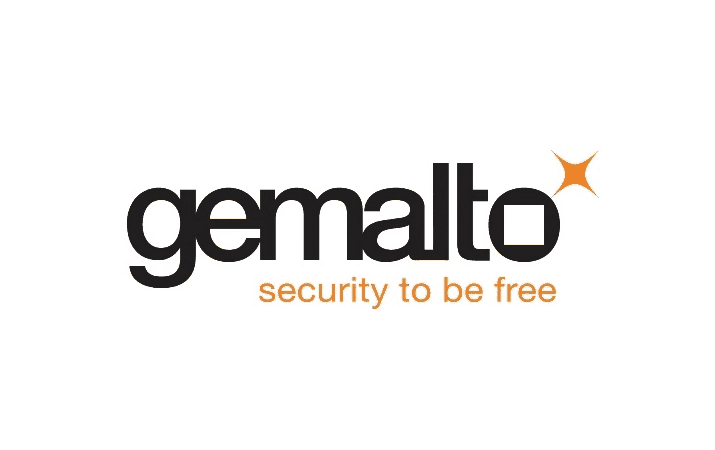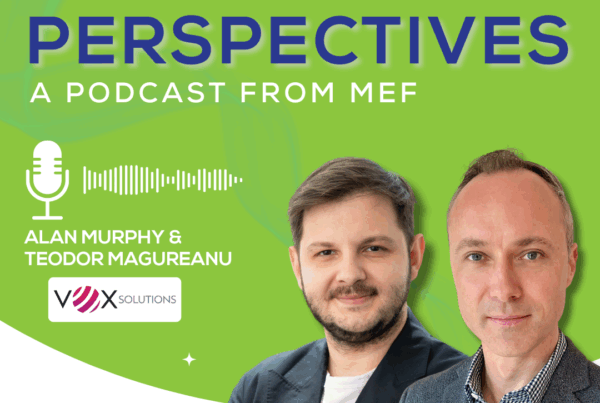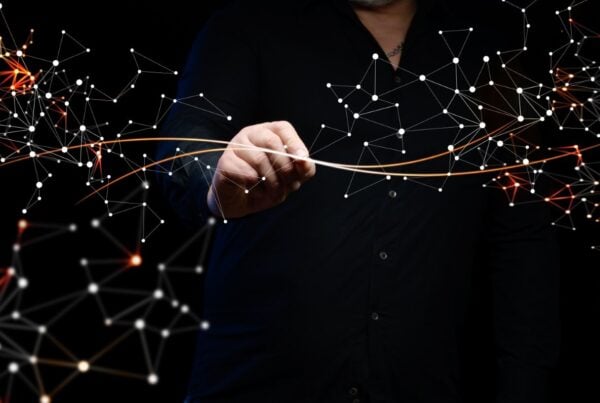Recent hardware releases from some of the most influential players in the mobile ecosystem have introduced the latest wave of mobile and IoT technology with some eye catching features focusing on privacy, security and new ways for consumer’s to use their phones. Google unveiled their 2nd generation of Pixel phones as well as a host of smart home hardware and peripherals just weeks after Apple’s annual event where they showed off the iphone 8 and iPhone X and a new sim-ready watch. There was also a major hardware push from Amazon with a newly updated range of connected smart-home accessories.
We asked MEF Members for their thoughts on the new hardware and strategies – here’s what they said.

Simon Moffat, Technical Product Manager, Access Management, ForgeRock
Mobile “phones” are no longer phones. They are powerful computers, with operating systems, secure storage areas, complex authentication and a huge ecosystem of interoperable apps and services. We are also seeing a much broader area of related device infrastructures – thinking the smart home, being populated by devices from Google and Amazon and others.
From a basic security perspective, Apple claim the new Face ID mechanism for login is the safest method of user login yet. It is a bold move, one driven from a “form follows function” design approach. Whilst admirable to focus on reducing the barrier to access to device, making sure the crossover rate (the difference between letting someone in who shouldn’t be in against blocking someone who should) is palatable will be a key factor in it’s popularity.
More interestingly, there has been little on data management and protection. “Phones” and home devices collect data, generate data and send data.
Data that needs securing, needs identity tagging and ultimately needs privacy preserving. It’s interesting to see what processes both the vendors and telco’s will provide to allow secure sharing, retrieval and removal of end user data from the now myriad of devices, apps and platforms.
Rafael Pellon, Partner, Focaccia, Amaral, Salvia, Pellon e Lamonica Advogados
The latest releases from the titans of the mobile industry seem to realize that the smartphone as we know it is dead and it has been broken into pieces, with cameras, speakers and watches aiming to replace it. Gone is the digital Swiss knife of the 21st century on the verge of more specialized devices, confirming the trend that started with smartwatches, although they still need to prove their smartness.
Along with the demise of smartphones, privacy also seems to be a victim of the tech evolution, with devices that scan your face and take pictures whenever they seem fit.
Fingerprints and headphone jacks aside, this new era of incremental changes looks somehow awkward if you don’t embrace it with total belief that others know better than you how to handle your digital self.
Oisin Lunny, Chief Evangelist, OpenMarket
With recent announcements from Apple and Google around new handsets and real-time translation earbuds, it feels like our Phono Sapiens species is getting a major upgrade. As with the App Store, I think Apple’s new Bionic Chip with Neural Engine is news we will not fully appreciate for some time.
As Forrester Research analyst Brandon Purcell stated, this is a big deal because it allows artificial neural networks, which are the reason for all the hype around AI today, to run on the handset itself rather than in the cloud.
Combining this with Apple’s Core ML framework for machine learning will transform what it is possible to achieve on the handset. The sophistication of the technology, and the depth to which it will understand a customer’s needs, could usher in a new era of empathetic customer experience design.
This is not before time, as Phono Sapiens is exhibiting distinct signs of app fatigue. I suspect that the combination of Rich Communications Services (RCS) and upgraded ML solutions across the industry, will be transformative. It has never been more important for brands to establish meaningful relationships with their customers by using mobile messaging, in order to prepare for this sea change.
Tristan Nitot, Chief Product Officer, Cozy Cloud
This is a very interesting move by Google, who are extending their reach from the smartphone to new devices, but it’s still fundamentally the same story, the same two-sided strategy:
- Offering new services that are increasing our dependency on the company’s services.
- Collect more personal data that is used to profile users to sell more targeted advertising to advertisers, which are Google’s actual clients.
Becoming more dependant on Google is what they want for us, but is it really what is what is good for us as individuals? We need to realise that centralising our personal data into the hands of Google is increasing our dependency on them.
We as an industry need to create decentralised solutions that increase individual empowerment, otherwise we — collectively as individuals — will end up becoming serfs of a couple of digital lords.
What we’re talking right now is not just business, it’s what kind of digital world we want our children to live in. For them to be free, we need to build decentralised personal clouds that connect our devices and process their data, without sending all of it to a centralised digital lord who has unlimited power.
Julian Ranger, Founder and Executive Chairman, digi.me
Recent mobile and in home device hardware and software developments show an increasing emphasis on moving processing to the edge, and also returning and processing personal data at the edge – rather than holding and processing data in central SAAS services. There is a clear shift developing that is gathering momentum
Apple emphasises privacy, enables individuals to hold their data in HealthKit and Homekit, has included new chips which promote AI processing on device (inc. new photo AI in latest iOS).
Google has also promoted distributed AI learning on device, again using photo processing as an example.
Coupled with risks associated with large centralised data stores such as seen with Equifax et al and the moves to promote a new personal data ecosystem with the individual at the centre of their digital lives, rather than as an outside player, this looks very much like the beginning of a new shift – power to the edge supported by the middle (SAAS).
Didier Benkoel-Adechy, Segment Marketing for Mobile, Gemalto
The new Apple Watch (Series 3) is already starting to make waves in the consumer electronics and wearables market. Initial reviews and previews have praised a range of new features, in particular the independence of the watch. But what are the key developments that will influence the market significantly? Can the Series 3 really change the game? Here are three key reasons why it will.
1. New use cases
By far the most important and game-changing new feature is cellular connectivity. The Apple Watch 3 will be able to function completely independently from your iPhone, allowing many new use cases. Thanks to an eSIM (Electronic Subscriber Identity Module), users will have access to a data connection through the watch, even if they leave the paired iPhone behind at home.
This will undoubtedly make a big difference as permanent connectivity allows many new use cases in terms of real-time monitoring (healthcare) and real-time coaching for sport. The technology is now ready especially as key players such as Samsung, Lenovo and Microsoft already want to move this type of connectivity forward, providing seamless smart connectivity experience. According to our own research, it’s clearly what end users expect.
2. Greater autonomy
The Series 3, fortunately, for those relying on a more resilient battery in their smart watch, offers “all -day battery life”, which should amount to 18 hours of normal use.This level of battery life will enable a greater sense of autonomy for end users, who will be able to enjoy a full day’s worth of activity with the watch
3. Beyond the consumer IoT
This development will also affect industrial use cases, as the announcement will likely boost the deployment of secure element based security for industrial purposes. This will be crucial as we also anticipate greater demands for the IoT to keep step with the advancements for consumers (e.g. smart buildings, smart street lamps etc.). We’ve already seen this in the automotive industry with more and more eSIMs now being installed.
Andrew Bud, Founder & CEO, iProov
The Apple iPhone X is going to change the world.
Not all by itself, but Apple has repeatedly proved its ability to change and create entire markets by leading with great products.
The iPhone X is the first handset attempt to bring serious face verification to the mainstream market; it will convince hundreds of millions of consumers worldwide that face verification is an easy, safe and fun way to authenticate. That will create opportunities for a whole industry of competitors, as well as for Apple itself, providing the standard is high.
In particular, Apple have come to grips with anti-spoofing, which is the most important capability of a face authenticator.
Controlled illumination, the method pioneered by iProov and used in the iPhone X, is by far the most effective way of ensuring the genuineness of a credential – your face – which is unique but not secret.
Already, Apple is drawing the fire of those who are worried about the consumer trust issues – privacy & consent – raised by face authentication, and I have no doubt that by laying them to rest, Apple will give all of us in this market a great boost.
Danny Preiskel, Senior Partner, Preiskel & Co LLP
I have just returned from Brussels where many of the chief execs of leading Communications regulators from across the globe met to discuss their approach to regulating IoT and OTT providers amongst other items. For years, traditional telecoms operators complained to regulators that it was not fair that they, but not the OTTs had additional data privacy (commonly referred to as e-privacy) obligations imposed upon them as part of the EU telecoms package of directives.
The GDPR, that MEF members ought to be aware of thanks to the efforts of the MEF Consumer Trust initiative, has helped addressed some of the imbalances by applying stringent data privacy obligations on the OTTs and IoT providers as well as of course any company wherever they are based on our planet that is processing personal data of Europeans.
One of the regulatory features of IoT is that manufacturers of goods that traditionally did not have to give too much thought to complex data privacy issues or telecoms regulation, are now being caught up in the world of GDPR and telecoms regulation, as their product managers come up with new business cases for producing connected basic household appliances. For example, the father of one of the lawyers in the Preiskel & Co team has a connected (and no doubt, hackable) shower. So does the connected shower need to get consent under the GDPR and the manufacturer be concerned by the new e-Privacy draft Regulations? Presumably consent from the data subject, ie the person having the shower, will have to be obtained via the associated app, and whilst on the subject of consent, MEF have recently published a superb white paper on consent in the digital economy.
Furthermore, does the shower manufacturer need to be concerned by the existing e-Privacy Directive or draft Regulations?
The e-Privacy regime imposes on communications providers obligations in relation to storage of metadata (including Call Detail Records) concerning the actual communications, obligations on ensuring the security of communications (internet and voice) and prohibits intercept of data (eg location data) except in limited circumstances. Finally the traditional communications providers seem to have got their way as the new draft EU Regulation on e-Privacy, set to come into force on the date of the GDPR, 25 May 2018, will apply to OTTs. In fact the new Regulation will apply to all providers of electronic communications services, including text message and email providers, which are not subject to the current e-Privacy Directive. It will also apply to non-EU providers that provide electronic services (free and/or paid) to EU nationals.
The good news from an IoT perspective is that there is some sympathy brewing and gaining momentum for a distinction and exemption to be introduced for those IOT providers that are not primarily providing communications services. This would mean that for example the connected shower, toasters and kettle providers would not face the same e-privacy obligations as the networks carrying the data being generated and transmitted by any connected household goods.
However, drawing the line as you can imagine is always going to be a delicate and difficult task in this fast moving space, so it is certainly worth keeping an eye on the final wording of the e-Privacy Regulation, especially as fines mirror those under GDPR, namely up to 4% of worldwide turnover.













Thanks MEF for sharing this Article with us! I hope Mobile technology allows you to be connected to other people, things, places, etc. All from a gadget you can hold in your hand! The technology we have today is here to stay and will continue to evolve
It’s so interesting to see how mobile has changed almost everything.
From finance to health, education, jobs, transportation and even agriculture,
we see a lot of ecosystem altering innovations driven
by ideas from the mobile space.
Thanks for sharing these insights.